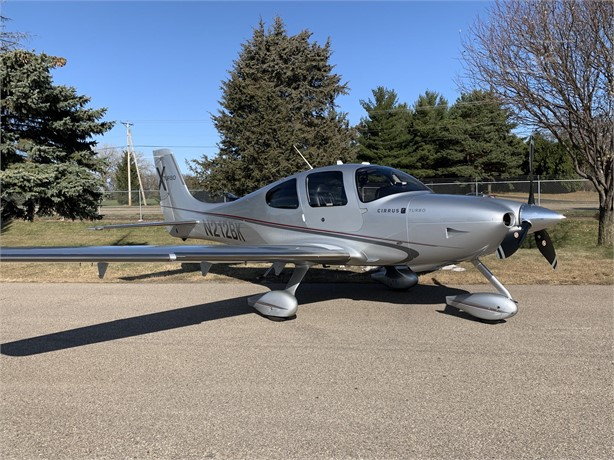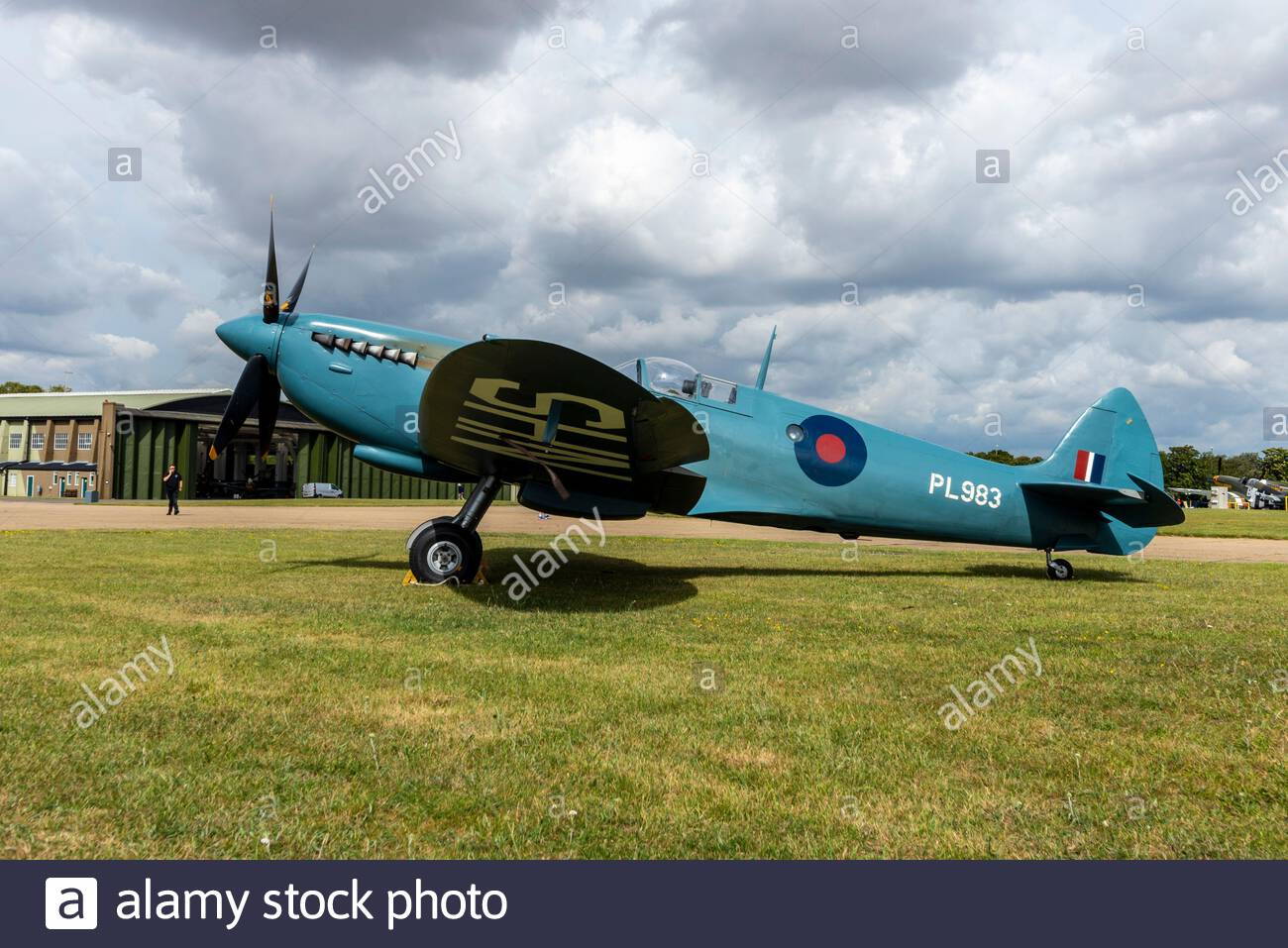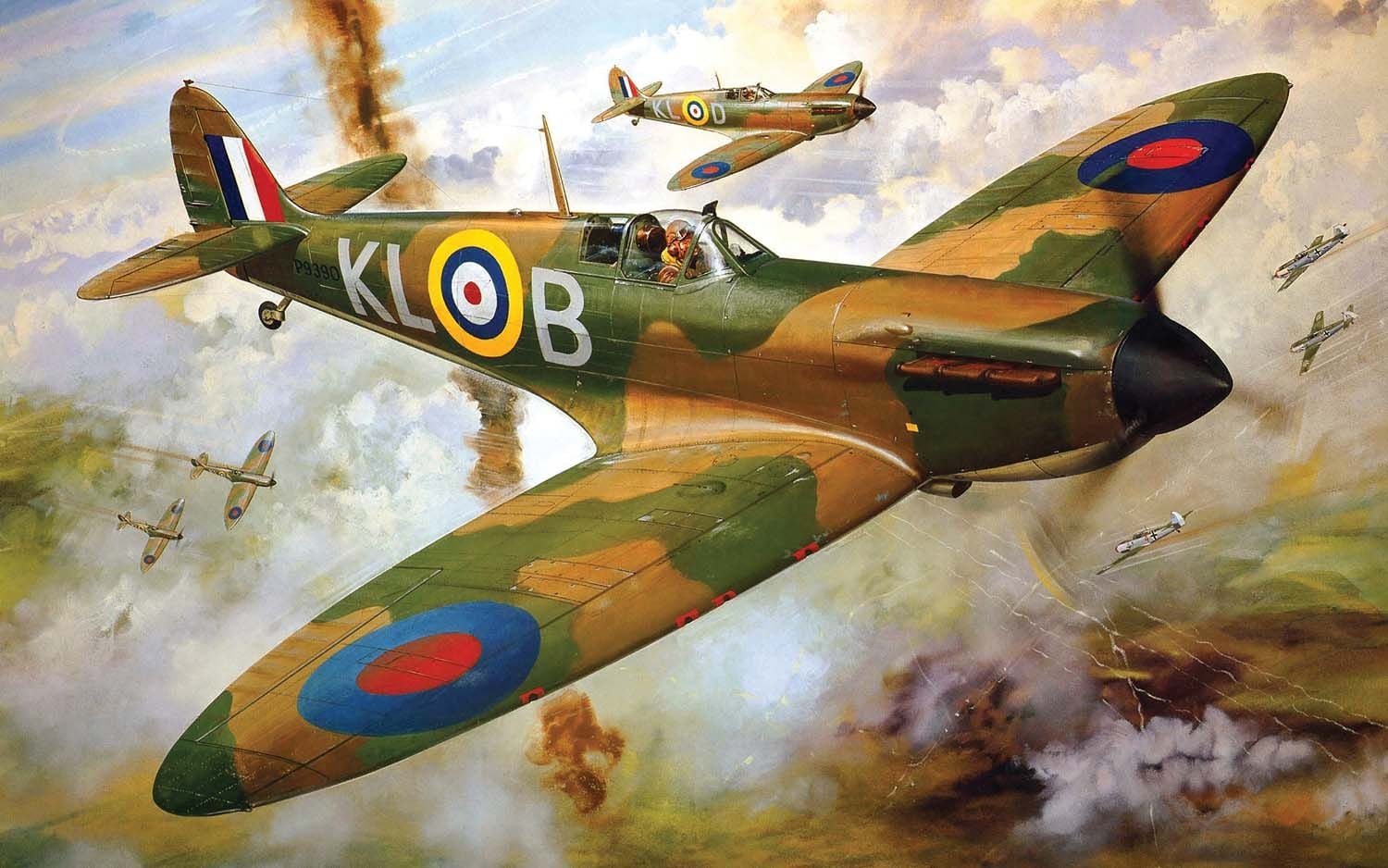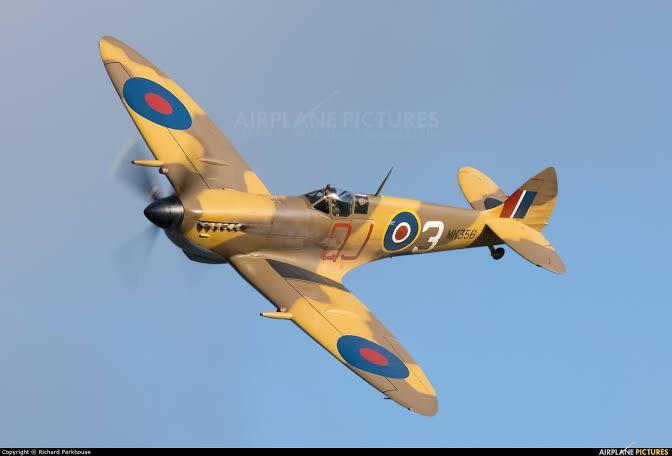Can anyone answer a question about RAF camouflage colours during WWII
Thread Starter
Join Date: Sep 2007
Location: Dartmouth
Age: 58
Posts: 10
Likes: 0
Received 0 Likes
on
0 Posts
Can anyone answer a question about RAF camouflage colours during WWII
Can anyone answer a question about RAF camouflage colours during WWII.
There is a lot of information about what colours were used on aircraft at different times and the particular patterns used and so on but not much on why certain changes were made.
In 1941 a change was made on fighter aircraft from the early war combination of Dark Green & Dark Earth to a Dark Green/Dark Grey combination. The same change was also made to the colours of specific bomber aircraft (the Mosquito is referred to the Air Ministry Order making the changes) but not to heavy bombers or night bombers.
I can see why dark grey and dark green would be a better combination of colours because there is actually very little brown visible from the air so my question is why not make the change for all aircraft?
There is a lot of information about what colours were used on aircraft at different times and the particular patterns used and so on but not much on why certain changes were made.
In 1941 a change was made on fighter aircraft from the early war combination of Dark Green & Dark Earth to a Dark Green/Dark Grey combination. The same change was also made to the colours of specific bomber aircraft (the Mosquito is referred to the Air Ministry Order making the changes) but not to heavy bombers or night bombers.
I can see why dark grey and dark green would be a better combination of colours because there is actually very little brown visible from the air so my question is why not make the change for all aircraft?
Because they were only going to be used in the dark ?
It was my understanding that Mosquitos were low altitude bombers and attack aircraft so in that role they’ll need to be camouflaged to make sighting from above more difficult.
So use ground colors.
Grey is pretty much a universal “blend” color as even a fully grey or dull silver aircraft is very difficult to spot.
Silver was the worst color that Cirrus could have used.

Wasn’t the photo reconnaissance version of the Spitfire all grey?

So use ground colors.
Grey is pretty much a universal “blend” color as even a fully grey or dull silver aircraft is very difficult to spot.
Silver was the worst color that Cirrus could have used.

Wasn’t the photo reconnaissance version of the Spitfire all grey?

It can certainly look more grey than blue in many lighting conditions, and when against sky, which is the whole point of it....... and it does what it says on the tine in that regard.
In the right light and right contrast background, it's very clearly blue though, as seen here.

In the right light and right contrast background, it's very clearly blue though, as seen here.

Join Date: Oct 2001
Location: Starring at an Airfield Near you
Posts: 371
Received 15 Likes
on
7 Posts
One of the ‘counter intuitive’ things to come out of WWII camouflage research was the effectiveness of the ‘Matt Black’ (R4MD??? or something like that!) overall night fighter and lower surface night bomber finish.
Initially it seems perfectly sensible that a matt black finish is the way to go for night operations. However, research revealed that, when caught in a searchlight, the matt black finish glowed white in the searchlight beam as the light was refracted between the extremely ‘rough’ molecular surface finish required to achieve the matt effect, thereby achieving exactly the opposite effect desired!
Using a high-gloss black finish, perversely, did achieve the desired effect; I recall reading that a trial using the high-gloss finish on a Lancaster (?) - whereby the pilot was instructed to fly through London’s searchlight belt and deliberately attempt to get the aircraft coned – resulted in the searchlight batteries reporting that they failed to find the target aircraft, whereas the pilot reported that he had flown through numerous searchlight beams and tried to stay in them, but that the searchlights simply did not retain contact.
Added to the significant loss of speed attributable to the matt finish (16 mph for the Mosquito NFII) resulted in the adoption of gloss-black for new production night-fighters (see P-61 Black Widows and P-38M Lightnings) and late production heavy bombers. It probably also explains why RAF C-130Ks were originally finished with a high-gloss black under surface.
Initially it seems perfectly sensible that a matt black finish is the way to go for night operations. However, research revealed that, when caught in a searchlight, the matt black finish glowed white in the searchlight beam as the light was refracted between the extremely ‘rough’ molecular surface finish required to achieve the matt effect, thereby achieving exactly the opposite effect desired!
Using a high-gloss black finish, perversely, did achieve the desired effect; I recall reading that a trial using the high-gloss finish on a Lancaster (?) - whereby the pilot was instructed to fly through London’s searchlight belt and deliberately attempt to get the aircraft coned – resulted in the searchlight batteries reporting that they failed to find the target aircraft, whereas the pilot reported that he had flown through numerous searchlight beams and tried to stay in them, but that the searchlights simply did not retain contact.
Added to the significant loss of speed attributable to the matt finish (16 mph for the Mosquito NFII) resulted in the adoption of gloss-black for new production night-fighters (see P-61 Black Widows and P-38M Lightnings) and late production heavy bombers. It probably also explains why RAF C-130Ks were originally finished with a high-gloss black under surface.
Join Date: Jul 2007
Location: Auckland, NZ
Age: 79
Posts: 722
Likes: 0
Received 0 Likes
on
0 Posts
I'm wondering why that could have been, and I think maybe the difference between diffuse reflection from a matte surface and specular from glossy: so if you happen to be in the path of the mirror-like reflection from a gloss finish, it's brighter, but at a searchlight, that will only be the case if the surface is normal to the beam. Is that how it worked?
Join Date: Aug 2000
Location: London, England
Posts: 271
Likes: 0
Received 0 Likes
on
0 Posts
56 Squadron was involved in the trials to find a revised fighter day scheme at North Weald. I wrote an article for the Airfield newsletter about this. Part is reproduced below, which explains the reasons and what they tried....
From October 1940 onwards, RAF fighter pilots started reporting that the Temperate Land Scheme (brown and green) was too dark for the altitudes at which they were now flying and fighting. This Scheme had been developed for use at altitudes of 10,000 feet or lower. With fighting now taking place at up to 30,000 feet, and the RAF moving on to the offensive in the spring of 1941, effective camouflage at higher altitudes became more important.
On 26 March 1941, Fighter Command requested that trials be carried out by the Air Fighting Development Unit (AFDU), which was based at Duxford, with the help of the Royal Aircraft Establishment at Farnborough. The aim was to find a compromise scheme suitable for day fighters at all altitudes, as well as when dispersed on the ground.
Four different schemes were applied to the AFDU’s Spitfires. Initially, a two colour scheme was tried using a light grey. One Spitfire was painted in Sky Grey with an Olive Grey mottle similar to the Luftwaffe’s fighters (Scheme A). The underside was in Sky Blue. A second Spitfire was finished using a new colour for the undersides – half way between Sky and Sky Blue. The top surfaces were in the existing brown and green (Scheme B).
Neither of these proved to be satisfactory. The light grey was too light and provided too much contrast. So a third scheme was devised, which used Medium Sea Grey with Olive Grey on the upper surfaces and Sky Blue undersides and narrower yellow bands to the fuselage roundels (Scheme C). A fourth scheme was also applied to one of these Spitfires – Medium Sea Grey and Dark Sea Grey with the under surfaces finished in Sky Grey (Scheme D). Both of the latter schemes were much more effective at altitude.
During May, three 56 Squadron Hurricanes were flown to Duxford from North Weald to take part in further experiments – Z2697, Z2586/P and Z2767/W. A larger trial was then arranged using a further eight Hurricanes from the Squadron – Z2585, Z2697, Z2702, Z2992/K, Z3169, Z3324/F, Z3329 (shot down into Channel on 17 June when flown by Sergeant Richard Carvill, who was killed) and Z3352. These were painted in the C Scheme, and took part in a number of cross-Channel operations.
When the Squadron moved to Duxford on 26 June they were still using this experimental scheme. In mid-July, some of the Hurricanes had the Dark Sea Grey repainted in Dark Green, so trials continued to take place until the definitive scheme was settled upon.
On 8 August the Air Ministry finally distributed the new camouflage and markings regulations, which would be introduced from 15 August. These were known as the Day Fighter Scheme, and featured upper surfaces of Dark Green and Ocean Grey, which had a blue cast developed for these higher altitudes and was most probably Olive Grey renamed, along with Medium Sea Grey undersides. Sky codes, spinner and tail band were also specified, and yellow leading edges to the wings introduced for recognition purposes.
It remained in use for the rest of the war, and formed the basis of post-war camouflage until the introduction of the low visibility air superiority grey scheme in the 1970s.
From October 1940 onwards, RAF fighter pilots started reporting that the Temperate Land Scheme (brown and green) was too dark for the altitudes at which they were now flying and fighting. This Scheme had been developed for use at altitudes of 10,000 feet or lower. With fighting now taking place at up to 30,000 feet, and the RAF moving on to the offensive in the spring of 1941, effective camouflage at higher altitudes became more important.
On 26 March 1941, Fighter Command requested that trials be carried out by the Air Fighting Development Unit (AFDU), which was based at Duxford, with the help of the Royal Aircraft Establishment at Farnborough. The aim was to find a compromise scheme suitable for day fighters at all altitudes, as well as when dispersed on the ground.
Four different schemes were applied to the AFDU’s Spitfires. Initially, a two colour scheme was tried using a light grey. One Spitfire was painted in Sky Grey with an Olive Grey mottle similar to the Luftwaffe’s fighters (Scheme A). The underside was in Sky Blue. A second Spitfire was finished using a new colour for the undersides – half way between Sky and Sky Blue. The top surfaces were in the existing brown and green (Scheme B).
Neither of these proved to be satisfactory. The light grey was too light and provided too much contrast. So a third scheme was devised, which used Medium Sea Grey with Olive Grey on the upper surfaces and Sky Blue undersides and narrower yellow bands to the fuselage roundels (Scheme C). A fourth scheme was also applied to one of these Spitfires – Medium Sea Grey and Dark Sea Grey with the under surfaces finished in Sky Grey (Scheme D). Both of the latter schemes were much more effective at altitude.
During May, three 56 Squadron Hurricanes were flown to Duxford from North Weald to take part in further experiments – Z2697, Z2586/P and Z2767/W. A larger trial was then arranged using a further eight Hurricanes from the Squadron – Z2585, Z2697, Z2702, Z2992/K, Z3169, Z3324/F, Z3329 (shot down into Channel on 17 June when flown by Sergeant Richard Carvill, who was killed) and Z3352. These were painted in the C Scheme, and took part in a number of cross-Channel operations.
When the Squadron moved to Duxford on 26 June they were still using this experimental scheme. In mid-July, some of the Hurricanes had the Dark Sea Grey repainted in Dark Green, so trials continued to take place until the definitive scheme was settled upon.
On 8 August the Air Ministry finally distributed the new camouflage and markings regulations, which would be introduced from 15 August. These were known as the Day Fighter Scheme, and featured upper surfaces of Dark Green and Ocean Grey, which had a blue cast developed for these higher altitudes and was most probably Olive Grey renamed, along with Medium Sea Grey undersides. Sky codes, spinner and tail band were also specified, and yellow leading edges to the wings introduced for recognition purposes.
It remained in use for the rest of the war, and formed the basis of post-war camouflage until the introduction of the low visibility air superiority grey scheme in the 1970s.
Thread Starter
Join Date: Sep 2007
Location: Dartmouth
Age: 58
Posts: 10
Likes: 0
Received 0 Likes
on
0 Posts
Thank you Rallye Driver for your excellent answer.
I never thought that the Earth Brown/Dark Green combination was designed for lower altitudes as well as for when aircraft were dispersed on the ground but as it was developed in the late 1930's when aircraft flew lower that makes a lot of sense.
Also makes sense to retain it for larger night bombing aircraft - as almost any choice of colors would appear as tones of grey by night the greater visual threat would be from air attack while on the ground for which the Brown/Green scheme would be more effective.
I never thought that the Earth Brown/Dark Green combination was designed for lower altitudes as well as for when aircraft were dispersed on the ground but as it was developed in the late 1930's when aircraft flew lower that makes a lot of sense.
Also makes sense to retain it for larger night bombing aircraft - as almost any choice of colors would appear as tones of grey by night the greater visual threat would be from air attack while on the ground for which the Brown/Green scheme would be more effective.
Join Date: Feb 2006
Location: Hanging off the end of a thread
Posts: 32,892
Received 2,830 Likes
on
1,208 Posts
The grey was also an advantage over the sea.
The clever thing about the Dark Green / Brown scheme was it was designed so aircraft despatched to say Africa could have the Green quickly over sprayed to give you the two Brown Desert scheme, or vice versa.
The clever thing about the Dark Green / Brown scheme was it was designed so aircraft despatched to say Africa could have the Green quickly over sprayed to give you the two Brown Desert scheme, or vice versa.
Join Date: Feb 2006
Location: Hanging off the end of a thread
Posts: 32,892
Received 2,830 Likes
on
1,208 Posts
Example




Join Date: Feb 2022
Location: Chicksands, Shefford
Posts: 1
Likes: 0
Received 0 Likes
on
0 Posts
Camouflage Markings
56 Squadron was involved in the trials to find a revised fighter day scheme at North Weald. I wrote an article for the Airfield newsletter about this. Part is reproduced below, which explains the reasons and what they tried....
From October 1940 onwards, RAF fighter pilots started reporting that the Temperate Land Scheme (brown and green) was too dark for the altitudes at which they were now flying and fighting. This Scheme had been developed for use at altitudes of 10,000 feet or lower. With fighting now taking place at up to 30,000 feet, and the RAF moving on to the offensive in the spring of 1941, effective camouflage at higher altitudes became more important.
On 26 March 1941, Fighter Command requested that trials be carried out by the Air Fighting Development Unit (AFDU), which was based at Duxford, with the help of the Royal Aircraft Establishment at Farnborough. The aim was to find a compromise scheme suitable for day fighters at all altitudes, as well as when dispersed on the ground.
Four different schemes were applied to the AFDU’s Spitfires. Initially, a two colour scheme was tried using a light grey. One Spitfire was painted in Sky Grey with an Olive Grey mottle similar to the Luftwaffe’s fighters (Scheme A). The underside was in Sky Blue. A second Spitfire was finished using a new colour for the undersides – half way between Sky and Sky Blue. The top surfaces were in the existing brown and green (Scheme B).
Neither of these proved to be satisfactory. The light grey was too light and provided too much contrast. So a third scheme was devised, which used Medium Sea Grey with Olive Grey on the upper surfaces and Sky Blue undersides and narrower yellow bands to the fuselage roundels (Scheme C). A fourth scheme was also applied to one of these Spitfires – Medium Sea Grey and Dark Sea Grey with the under surfaces finished in Sky Grey (Scheme D). Both of the latter schemes were much more effective at altitude.
During May, three 56 Squadron Hurricanes were flown to Duxford from North Weald to take part in further experiments – Z2697, Z2586/P and Z2767/W. A larger trial was then arranged using a further eight Hurricanes from the Squadron – Z2585, Z2697, Z2702, Z2992/K, Z3169, Z3324/F, Z3329 (shot down into Channel on 17 June when flown by Sergeant Richard Carvill, who was killed) and Z3352. These were painted in the C Scheme, and took part in a number of cross-Channel operations.
When the Squadron moved to Duxford on 26 June they were still using this experimental scheme. In mid-July, some of the Hurricanes had the Dark Sea Grey repainted in Dark Green, so trials continued to take place until the definitive scheme was settled upon.
On 8 August the Air Ministry finally distributed the new camouflage and markings regulations, which would be introduced from 15 August. These were known as the Day Fighter Scheme, and featured upper surfaces of Dark Green and Ocean Grey, which had a blue cast developed for these higher altitudes and was most probably Olive Grey renamed, along with Medium Sea Grey undersides. Sky codes, spinner and tail band were also specified, and yellow leading edges to the wings introduced for recognition purposes.
It remained in use for the rest of the war, and formed the basis of post-war camouflage until the introduction of the low visibility air superiority grey scheme in the 1970s.
From October 1940 onwards, RAF fighter pilots started reporting that the Temperate Land Scheme (brown and green) was too dark for the altitudes at which they were now flying and fighting. This Scheme had been developed for use at altitudes of 10,000 feet or lower. With fighting now taking place at up to 30,000 feet, and the RAF moving on to the offensive in the spring of 1941, effective camouflage at higher altitudes became more important.
On 26 March 1941, Fighter Command requested that trials be carried out by the Air Fighting Development Unit (AFDU), which was based at Duxford, with the help of the Royal Aircraft Establishment at Farnborough. The aim was to find a compromise scheme suitable for day fighters at all altitudes, as well as when dispersed on the ground.
Four different schemes were applied to the AFDU’s Spitfires. Initially, a two colour scheme was tried using a light grey. One Spitfire was painted in Sky Grey with an Olive Grey mottle similar to the Luftwaffe’s fighters (Scheme A). The underside was in Sky Blue. A second Spitfire was finished using a new colour for the undersides – half way between Sky and Sky Blue. The top surfaces were in the existing brown and green (Scheme B).
Neither of these proved to be satisfactory. The light grey was too light and provided too much contrast. So a third scheme was devised, which used Medium Sea Grey with Olive Grey on the upper surfaces and Sky Blue undersides and narrower yellow bands to the fuselage roundels (Scheme C). A fourth scheme was also applied to one of these Spitfires – Medium Sea Grey and Dark Sea Grey with the under surfaces finished in Sky Grey (Scheme D). Both of the latter schemes were much more effective at altitude.
During May, three 56 Squadron Hurricanes were flown to Duxford from North Weald to take part in further experiments – Z2697, Z2586/P and Z2767/W. A larger trial was then arranged using a further eight Hurricanes from the Squadron – Z2585, Z2697, Z2702, Z2992/K, Z3169, Z3324/F, Z3329 (shot down into Channel on 17 June when flown by Sergeant Richard Carvill, who was killed) and Z3352. These were painted in the C Scheme, and took part in a number of cross-Channel operations.
When the Squadron moved to Duxford on 26 June they were still using this experimental scheme. In mid-July, some of the Hurricanes had the Dark Sea Grey repainted in Dark Green, so trials continued to take place until the definitive scheme was settled upon.
On 8 August the Air Ministry finally distributed the new camouflage and markings regulations, which would be introduced from 15 August. These were known as the Day Fighter Scheme, and featured upper surfaces of Dark Green and Ocean Grey, which had a blue cast developed for these higher altitudes and was most probably Olive Grey renamed, along with Medium Sea Grey undersides. Sky codes, spinner and tail band were also specified, and yellow leading edges to the wings introduced for recognition purposes.
It remained in use for the rest of the war, and formed the basis of post-war camouflage until the introduction of the low visibility air superiority grey scheme in the 1970s.
Is it possible to find the markings of a specific plane? I am looking for the colours of a Hawker Hurricane from 56 Punjab Squadron, photographed in January 1942 at Duxford. I think I have found the aircraft's serial number
Your best bet is to post the photo you have and let the experts decide on what it shows. While common sense would dictate that it should carry the Day Fighter scheme, the reality may well have been different.
Try searching out the Fighting Colours and Bombing Colours, both books written by Michael J F Bowyer.
Alternatively write to Paul Lucas at Scale Aircraft Modelling.
Both those gentlemen have written extensively, and, more to the point, with deep knowledge on aircraft colour schemes.
Hope this helps
Alternatively write to Paul Lucas at Scale Aircraft Modelling.
Both those gentlemen have written extensively, and, more to the point, with deep knowledge on aircraft colour schemes.
Hope this helps




